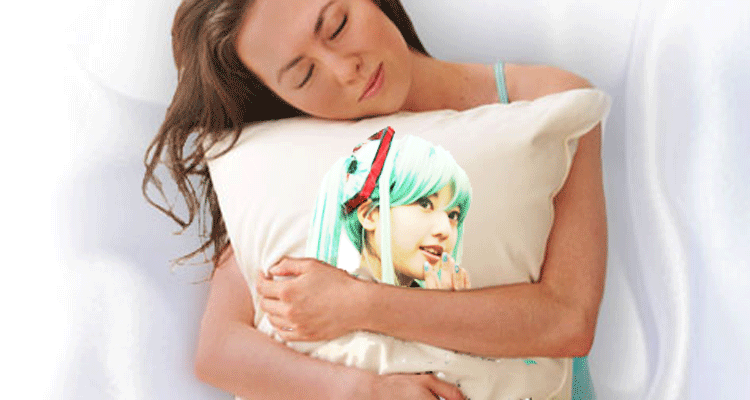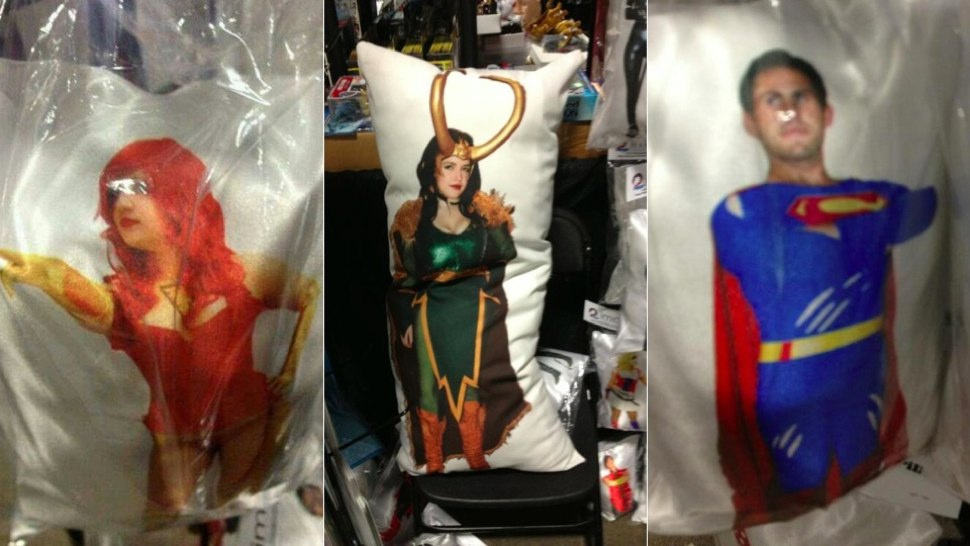The Cosplay Pillow Controversy: Image Rights and Model Release Forms

By now you’ve probably heard about AnimeNext’s infamous Cosplayer Pillow incident. If not, then the long and short of the story is this: photographer Eric Pearce of 2 Image Solutions Photography used images he took of cosplayers, cosplayers who he claimed had signed release forms, and then put their photos on pillows for sale without consent. Needless to say, the owners of the faces (and posteriors) decorating these pillows were very upset.
At anime cons we’re used to seeing body-sized pillows of anime characters, but to put actual faces and bodies of people within the community on a pillow (albeit of smaller size) seems a bit creepy. Whether simply using the pillow as an accent for your futon, to rest your head upon while reading, or for undisclosed reasons, purchasing a pillow of your favorite cosplayer seemed to rub people the wrong way.

One such cosplayer is Marie Grey, whose blog post Cosplay Pillows: The Actual Story went viral. I was able to talk with Marie about this issue and what it says about cosplay photography, modeling, and vending as a whole.
[divider]
LUCRETIA: It may seem like an obvious question, but first and foremost, you do not condone your image (front and back) being on a pillow, correct?
MARIE: That’s absolutely correct. I don’t see how this could possibly be a positive for the cosplay community. If I had known that this was what would happen when I let Eric take photos of me, I would’ve never agreed.
L: If your image (front and back) was used on a different item (say a coffee mug), would this have caused the same stir?
M: Yes! I’m a cosplayer, not a celebrity. I don’t want to be marketed like that in any way.
L: What do you think your image on a pillow says to cosplayers about you, about the cosplay community, and about women within geeky communities in general?
M: It doesn’t say anything good. This community is about sharing nerdy interests and hobbies with one another. I photograph other cosplayers all the time and I would never sell those images on t-shirts, coffee mugs, body pillows, etc. to make a quick buck, ESPECIALLY without notifying each cosplayer first. It’s embarrassing to see that. It’s embarrassing to see ME on that. It makes me feel like less of a human and more of an object. I’m very interactive with my supporters across social networking platforms and this takes that away from me. This makes me look like a completely different person. I don’t think this is a gender issue, as there were male cosplayers with pillows being sold as well. But more and more you hear about cosplayers getting taken advantage of and it’s sad to see it happen. We’re just people with nerdy interests, and more and more people keep popping up trying to take advantage. It’s sad.
L: You mentioned in your own article that you recall having a photo shoot with Image Solutions but that they never checked your ID. Do you have a copy of the release form you signed? If not, have you petitioned him to provide a copy of this release for analysis?
M: At the present, I do not have a copy of my signed release…however, neither does the photographer. When he was approached by my friend and fellow cosplayer, Pixie Belle, he agreed to provide her with the release…except it was digital and only had her name typed on it, rather than her actual signature. I do recall giving him my name and email address so he could email me the finished product, which he did about a month after the convention. However, he has no physical copies of the contracts. As far as I know, he could have changed it several times since he took my photo in February 2012. Without the original document, how are we to know for sure that he’s being legitimate? I have always been very careful about reading agreements before signing my name on them, and would not have signed if it had said he could sell my photo in whichever way he pleased, as he’s been stating it does. I did have the head of the dealer’s room read out a release to me over the phone and it only referenced that he could sell things if it directly promoted the service he was providing. In this instance, he was promoting his 360-degree digital images. I don’t see how a pillow with my front and backside promotes a digital image in any way whatsoever.
L: Is there anything Image Solutions can do now that damage is done to rectify this situation? Remove all the pillows from circulation, issue an apology, etc?
M: As I stated in my article, I’m not looking for anything in return. I don’t need an apology because I know it wouldn’t be genuine. I just want him to stop selling these pillows. They’re offensive and they are upsetting everyone who is on them. Stop cheapening these talented cosplayers who work their asses off by being unprofessional and opportunistic. Many of these cosplayers, especially the younger ones, are too shy to speak up or too scared to say something when it bothers them. I have no issues speaking up for them. I understand that it’s easier to stand up for yourself when you’re part of a large group that can back you up. If I have to be the one to do that, then I will.
L: Do you think you will continue to model in photo shoots where a release form is necessary in the future?
M: Absolutely. As a photographer, I myself use release forms. They’re meant to protect both the photographer and cosplayer and clearly label the rights of each party. However, I have morals and would never try to bend the rules in order to wrongly profit off of the people I work with. If you’re going to run a business, you should want to maintain a good relationship with each of your clients, rather than take advantage of them.
: LIs there any advice you have for cosplayers about protecting their image?
M: For cosplayers who want to schedule shoots with photographers that require release forms, don’t turn them down just because they require one. Read the release. If you have questions, ask them about it. You need to know your rights and have an understanding of what’s written there. If what they’re saying seems contradictory to what you’re reading, it’s probably best to tell them you’re not comfortable with the terms and find someone else. A typical photo release will state that the photographer owns the rights to the images, but both parties are allowed to share them (usually through Facebook, Twitter, deviantArt, etc.) with proper credits. It usually also states that neither party can sell the photos for profit without the approval of the other party. Releases that include these clauses are typically okay to sign because they work in favor of both parties. But again, if something looks funny and you’re not comfortable with what you’re reading, don’t sign it.
L: What about convention chairs/those in charge of vendor rooms?
M: Convention chairs and those in charge of vendor rooms need to be more aware of what’s being sold in their domain and how those products affect their attendees. I can’t see why a convention would want to allow these kinds of things to happen. It hurts the cosplayers involved…the cosplayers that attend those conventions. How can a convention expect to bring attendees in if they endorse this behavior?
[divider]
After my conversation with Marie, Eric of 2 Image Solutions, the company in question, issued a change of policy here wherein he states that:
In the past, we were selling products with images of others as well as custom-ordered prints of themselves. This was meant to inspire people to elevate the level of their own costumes. We would like to assure participants that any pictures of them that we have taken WILL NO LONGER BE SOLD AT OUR BOOTHS OR AVAILABLE TO THE GENERAL PUBLIC. The products will be available ONLY to those of whom the pictures were taken. Any future products will be special-order so that the attendees will be able to order prints and merchandise of themselves and themselves only. We would like everyone to know that their privacy is of utmost importance to us and that we did not intend to violate their privacy in any way.
Eric also offered to send any of the remaining products available to those cosplayers on their featured merchandise free of charge. While acknowledging that people did not like his actions, however, he did not offer an apology. Actions (such as the free shipping/acquisition of products) have been taken to make reparations but the word “Sorry” was never uttered.
This becomes a cautionary tale to everyone–cosplayer, photographer, and vendor alike. If indeed he has signatures on his release forms, he may have a better standing should this become a legal matter; the ire he has received thus far, however, more than hurts his reputation within the community (potentially the only group interested in the product he’s selling). If in fact he does not have legally-verifiable signatures, then these release forms have no legal standing anywhere.
A creator can sell an image of a cosplayer, with their fully documented and complete consent and involvement in the creative process. Photographers should double-check with cosplayers during the development phase, and well before a product is produced. Likewise, cosplayers should know their rights, and not sign anything unless the agreement is read well ahead of time. And, of course, an agreement without a legally-verifiable signature is invalid. People interested in researching why we need release forms, or viewing some sample release forms can do so in the links. Otherwise, someone you don’t know might be walking around with you on a t-shirt, drinking coffee from your face, or even squeezing your image good-night.



